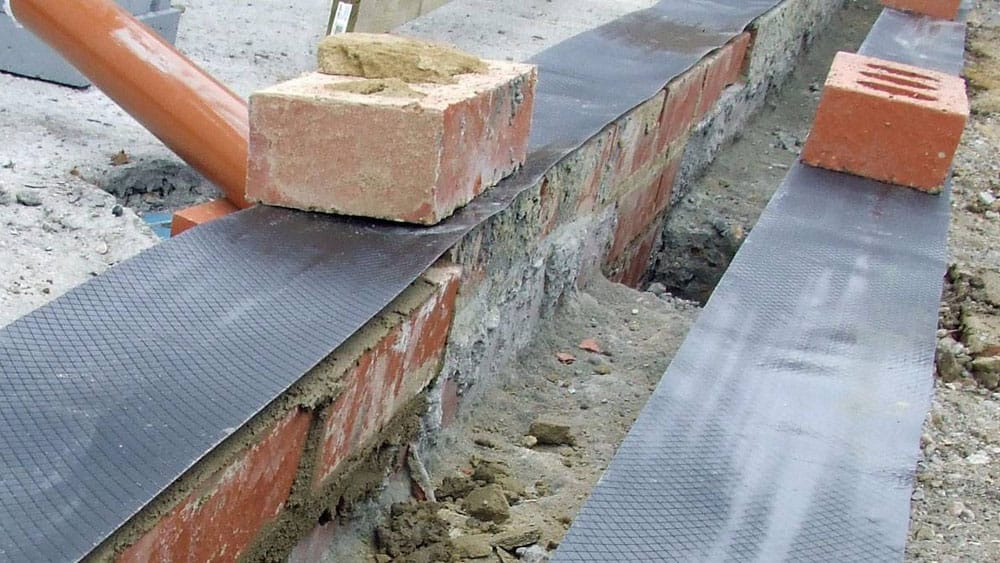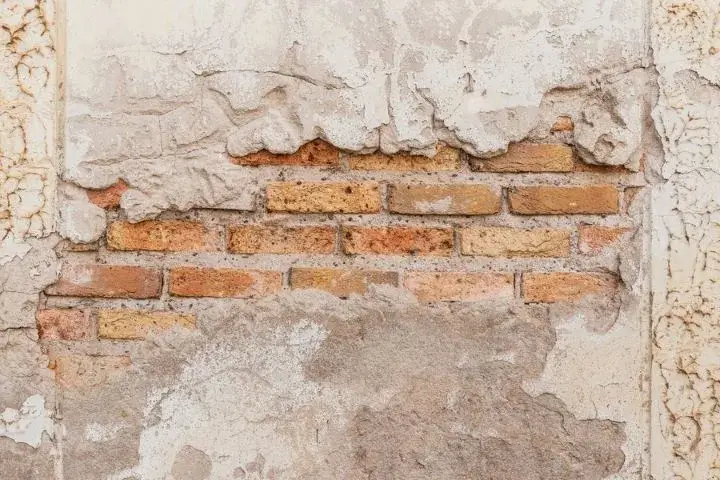All you need to know about choosing the right damp specialist newcastle for your building
Comprehending the Relevance of Damp Proofing in Stopping Structural Damages
Damp proofing works as a necessary defense against wetness infiltration in structures. This protective measure can prevent considerable architectural damage, yet several residential or commercial property owners stay uninformed of its significance. Acknowledging the signs of moisture and understanding the different remedies available can be necessary. Nonetheless, neglecting wet proofing can result in severe effects. What are the particular dangers and remedies that homeowner should think about?
What Perspires Proofing and Exactly How Does It Work?
Damp proofing functions as a crucial obstacle against wetness breach in structures. damp proofing newcastle. This procedure involves using particular products and strategies to stop water from permeating wall surfaces, floors, and various other structural aspects. Commonly, wet proofing can be attained via the installment of moist proof membranes, coatings, or the use of specialized sealants.These methods work by creating a safety layer that hinders wetness movement, making sure that the interior environment continues to be healthy and balanced and dry. Damp proofing is specifically vital in locations vulnerable to high moisture or groundwater, as it aids preserve the integrity of the structure over time.Moreover, efficient moist proofing contributes to energy efficiency by stopping warm loss related to damp atmospheres. By attending to possible wetness issues before they intensify, damp proofing serves as an aggressive procedure in protecting buildings from the damaging impacts of water damages, inevitably prolonging their life-span and keeping their worth
Typical Indications of Dampness in a Structure
Wetness problems within a structure can materialize through a number of visible indications that indicate the visibility of dampness. One popular indicator is the appearance of water spots on ceilings or wall surfaces, which usually shows moisture infiltration. Furthermore, bubbling or peeling paint can recommend that excess humidity is entraped below the surface area, bring about degeneration. Another typical indicator is the visibility of mold and mildew and mold, which grow in wet conditions and can often be recognized by their stuffy smell. A surge in humidity levels can create condensation on home windows and other surface areas, highlighting moisture troubles. Warped or irregular flooring may signify underlying wetness that jeopardizes architectural integrity. Identifying these signs early can aid reduce prospective damage and preserve a risk-free living setting. Routine evaluations and prompt action are important in addressing dampness concerns prior to they intensify.
The Risks of Disregarding Damp Proofing
Overlooking wet proofing can cause significant hazards to a building's structural honesty, as moisture buildup may deteriorate wall surfaces and structures. Furthermore, long term wetness develops a setting favorable to mold and mildew growth, posturing major health and wellness hazards to residents. Resolving these threats is crucial for making certain both security and durability of the property.
Architectural Honesty Threats
When property owners forget the relevance of efficient damp proofing, they subject their properties to substantial architectural honesty dangers. Extended wetness seepage can result in the growth of mold, which compromises fundamental elements and can jeopardize total stability. In addition, excess dampness can wear down concrete and brickwork, resulting in cracks and structural failings. Wood elements are specifically susceptible; they can rot and shed load-bearing capability, positioning serious dangers to the building's framework. Moreover, unattended moist problems might attract pests, such as termites, which even more intensify structural damage. Ultimately, disregarding wet proofing procedures can result in costly repair services and prospective safety risks, highlighting the crucial duty of positive wet administration in preserving the honesty of properties.
Carcinogen Worries
Just how can a seemingly small oversight bring about serious health risks? Overlooking wet proofing can create an environment for mold and mildew growth, which positions considerable health and wellness dangers. Mold and mildew spores can set off allergies, respiratory concerns, and other health and wellness problems, specifically in susceptible populations such as youngsters, the senior, and people with pre-existing problems. Furthermore, persistent wetness can draw in bugs like bugs and rodents, which carry conditions that further jeopardize health. The presence of wetness also adds to a decrease in interior air top quality, worsening bronchial asthma and other breathing conditions. Consequently, the failure to address wet problems not only threatens architectural integrity however likewise endangers the well-being of owners, highlighting the crucial demand for effective moist proofing actions.
Various Kinds Of Damp Proofing Solutions
Although numerous variables can contribute to damp concerns in structures, choosing the suitable damp proofing solution read more is crucial for protecting architectural integrity. Several choices are offered, each customized to particular conditions.One usual option is a damp-proof membrane (DPM), normally constructed from polyethylene or bitumen, which is set up in floorings and walls to stop wetness ingress. One more option is damp-proof programs (DPC), which are layers of water-proof material placed within walls to block climbing damp.Chemical damp proofing entails infusing waterproofing chemicals into wall surfaces to create a barrier versus moisture. Additionally, outside therapies such as tanking, which entails using a water-proof layer to the exterior of structures, can be effective in preventing water penetration.Each remedy has its advantages and is chosen based on the building's particular problems, environmental conditions, and lasting upkeep considerations, ensuring excellent protection against damp-related damages.

The Price of Damp Damage vs. Prevention
Comprehending the financial ramifications of damp damages contrasted to avoidance highlights the significance of proactive measures. The prices associated with damp damages can be substantial, consisting of repair work to architectural components, mold and mildew remediation, and prospective health-related expenses. Home owners may encounter considerable financial pressure if extensive damage occurs, causing boosted insurance premiums and lost property value.In contrast, buying moist proofing solutions is normally much more economical. Preliminary expenses for avoidance approaches, such as installing damp-proof membranes or enhancing drain systems, are often outweighed by the long-lasting savings from staying clear of expensive fixings. Furthermore, protecting against moist issues can improve a property's overall value and appeal, making it a wise financial investment. When evaluating the price of moist damage versus prevention, it comes to be clear that taking positive steps can secure economic interests and keep the stability of the building in time.
Picking the Right Damp Proofing Method for Your Residential property
Which damp proofing technique is most appropriate for a details home typically depends upon different elements, consisting of the building's age, existing dampness problems, and local ecological problems. For older structures, standard methods such as bitumen membranes or cementitious finishes may be more reliable, as they can provide a durable barrier versus rising damp. In contrast, more recent structures could gain from contemporary options like infused damp-proof courses, which are less invasive and can be customized to details moisture challenges.Additionally, buildings in locations with high water tables or heavy rainfall may need more sophisticated methods, such as cavity wall surface drainage systems or external waterproofing. Property owners must also take into consideration the specific materials used in their structure's building, as some methods may not work. Inevitably, a thorough evaluation by a professional can guide residential or commercial property owners in picking one of the most efficient damp proofing method tailored to their unique situations.
Maintaining Your Damp Proofing System Over Time
Regular maintenance of a damp proofing system is essential for guaranteeing its long-lasting effectiveness and safeguarding a building from moisture-related damages. Homeowner need to perform routine examinations to determine any type of signs of wear or concession in the moist proofing layer. This consists of checking for splits, peeling paint, or mold and mildew growth, which might suggest moisture intrusion.Additionally, it is a good idea to clean seamless gutters and downspouts consistently to avoid water buildup around the foundation. Reapplying membranes or sealants might be needed if deterioration is observed.Engaging expert services for routine analyses can further enhance the toughness of the system. These specialists can provide understandings right into prospective susceptabilities and recommend prompt repair work.
Regularly Asked Concerns
Just How Long Does Damp Proofing Therapy Last Prior To Needing Fixings?
The long life of wet proofing treatment usually varies from 10 to 30 years, depending upon aspects such as the approach made use of, ecological conditions, and upkeep techniques. Regular assessments can help identify when fixings may be required.
Is Do It Yourself Damp Proofing Effective Contrasted to Specialist Solutions?
The effectiveness of do it yourself wet proofing differs substantially. mould treatment newcastle. While some individuals might attain sufficient outcomes, specialist solutions typically guarantee thorough services, leveraging experience and top quality materials to avoid future concerns extra accurately than the majority of DIY attempts
Can Damp Proofing Improve Indoor Air Quality?
The question of whether wet proofing can improve interior air quality develops frequently. Reliable moist proofing minimizes wetness degrees, consequently minimizing mold growth and irritants, eventually adding to a much healthier interior setting for occupants.
Are There Certain Laws for Damp Proofing in Various Locations?
Regulations for damp proofing vary by area, frequently affected by local building codes and environmental conditions. Conformity assurances effective wetness control, advertising and safeguarding structures security, which highlights the necessity for adherence to these particular regulations.

What Are the Long-Term Perks of Appropriate Damp Proofing?
The long-lasting advantages of proper moist proofing include boosted architectural integrity, reduced maintenance costs, improved indoor air high quality, and raised home value. These advantages add to a much healthier living environment and prolonged life expectancy of buildings. Normally, wet proofing can be accomplished through the installment of damp proof membrane layers, finishes, or the use of specialized sealants.These methods function by creating a protective layer that inhibits wetness movement, making sure that the interior environment remains completely dry and healthy and balanced. Wet proofing is particularly vital in areas susceptible to high moisture or groundwater, as it assists maintain the stability of the structure over time.Moreover, reliable wet proofing adds to energy effectiveness by avoiding warmth loss connected with damp settings. Ignoring wet proofing can lead to significant dangers to a building's structural stability, as dampness buildup might compromise walls and structures (damp specialist newcastle). Various aspects can add to damp issues in buildings, picking the proper damp proofing service is necessary for maintaining architectural stability. Which moist proofing method is most appropriate for a details residential property typically depends on numerous aspects, consisting of the building's age, existing wetness problems, and regional ecological problems